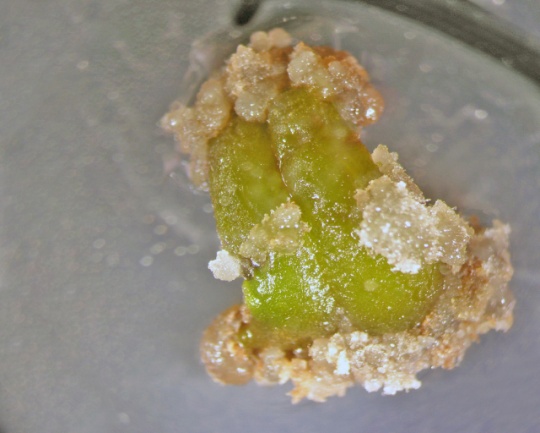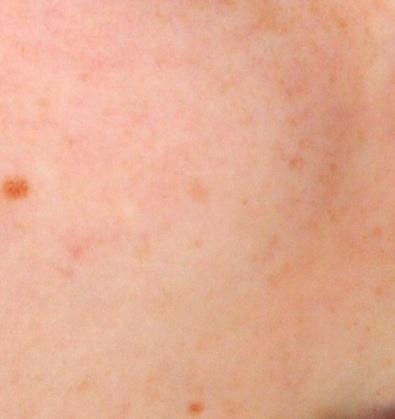| Sederma Company |
Going sustainable is the new challenge for cosmetic industrials from new product concepts to sourcing, formulation, industrial processes and packaging.
While stem cells are brought into the limelight because of the wonderful opportunities they offer in the cosmetic field, let’s have a look at how vegetal stem cells can be a successful approach combining sustainability and innovation.
Synthesis power of plant stem cells
Vegetal stem cells are undifferentiated cells characterised by the ability to renew themselves through mitotic cell division and to differentiate into diverse cell types. They also have the ability to synthesise all the phytomolecules present in the plant.
A plant, as an immobile organism, develops a collection of defence measures against predators and harmful environment, some based on distinctive molecules. Using this property, it is possible to force a plant, and more precisely stem cells, to synthesise a specific metabolite (called secondary metabolite as it is not essential to plant life) by mimicking a stress. Plant cell culture exploits the synthesis power of plant stem cells and offers an inexhaustible source of natural metabolites of interest with an optimised ratio efficacy/sustainability.
Plant cell culture principle
Once the plant samples have been selected and decontaminated, they are cultivated in vitro to create a pool of sterile and reproducible plant material. These plants are then injured and cultured on optimised solid medium to induce the dedifferentiation into stem cells and the formation of callus (heaps of undifferentiated cells) before being transferred in a liquid medium (figures 1 & 2). Protocols are developed to optimise these cell suspensions and to mimic environmental stress conditions in order to produce secondary metabolites of interest, from flask scale to bioreactor (1).
|
|
|
Plant stem cells, via this biotechnological process of plant cell culture, allow the infinite production of metabolites of interest with numerous advantages for sustainability, safety, quality and sourcing. Sustainability first, as there is no more over exploitation of land, widespread use of solvents and destruction of the biosphere. Safety and quality, as it allows the production of a high quantity of phytochemicals without using fertilisers, pesticides or GMOs. And finally, sourcing as the availability is unlimited, independently of crop, seasonality or supplier issues.
Overproduction of selected molecules
As a company involved in the research of innovative active ingredients with an even better sustainable approach, Sederma has naturally focused on the development of plant cell culture bioprocesses and has just launched its first ingredient based on this technology: Resistem™.
Resistem™ is obtained from the culture of a fragment of a small mountain rock plant which grows at altitudes of up to 2000 m, survives at temperatures of -30°C and thrives in poor chalky soils. The cosmetic advantages of this plant lie in its ability to synthesise secondary metabolites which play a role in the plant’s defences.
Classical extracts of the plant are bright yellow in appearance and have a low concentration of the molecules of interest. Stem cell culture of the same plant under calorie restriction conditions allows optimising the concentration of the suitable metabolites. And another advantage of this technique is that the extracts obtained are colourless or only slightly coloured.
Thanks to plant cell culture, Sederma is able to produce quantities of molecules of interest without causing damage to the environment. With a huge investment for R&D laboratories and production, Sederma achieved a production of 500 litres at the end of 2010 and is now able to produce at industrial scale thanks to its bench wave system bioreactor of 600 litres that was the first to be commercialised in Europe (figure 3).

Figure 3: 600 l bench wave system bioreactor
Plant stem cells based beauty bodyguard
Resistem™ provides the skin with the power of regenerating itself by inducing a cellular hormetic-like response that involves toxin reduction, cell lifespan extension and epidermal stem cell protection.
The hormetic response includes biological mechanisms able to help skin to defend and protect itself after exposure to stress. While skin undergoes daily stress such as UVAB, pollution, smoke, junk food that generate noxious agents; these noxious agents contribute to the accumulation of toxins in keratinocytes which create redness (2) (3), premature ageing, and reduces natural skin glow.
Resistem™ is an anti-ageing “bodyguard” of the skin. It helps skin to naturally decrease the level of pro-ageing agents while reducing the toxin-induced micro inflammations. In vivo studies demonstrated its ability to soothe the skin, reduce redness, improve the evenness of the complexion and restore its natural glow (figures 4 & 5). The skin feels appeased and reveals a much fresher look.
|
|
|
Conclusion
Using the synthesis power of stem cells, plant cell culture is a renewable resource, environmentally friendly that matches the increasing demand for innovative active ingredients products in line with a sustainable development approach. Resistem™ is one example of the know-how developed by Sederma. But with the acquisition in 2012 of the company Istituto di Ricerche Biotecnologiche (IRB) by Croda, Sederma is now also offering an array of plant stem cell ingredients with guaranteed efficacy, reproducibility and absolute sustainability.
Bibliography
(1) DROUET M., GRIZAUD C.M., LE MOIGNE C., “From Flask to Industrial Application: Study of Parameters Stimulating the Selective Production of Plant Secondary Metabolites”, COSM’ING 2010 — 5ème Colloque Européen sur les Ingrédients Cosmétiques et les Biotechnologies, June 2010, Saint Malo (France).
(2) TAKAOKA K., SHIRAI Y., SAITO N., “Inflammatory cytokine tumor necrosis factor-a enhances nerve growth factor production in human keratinocytes, HaCaT cells”, J. Pharmacol., 2009, 111, 381-391.
(3) PETERS E.M., LIEZMANN C., SPATZ K., DANILTCHENKO M., JOACHIM R., GIMENEZ-RIVERA A., HENDRIX S., BOTCHKAREV V.A., BRANDNER J.M., KLAPP B.F., “Nerve Growth Factor Partially Recovers Inflamed Skin from Stress-Induced Worsening in Allergic Inflammation”, J. Invest. Dermatol., 2010, 131, Nov. 18.






